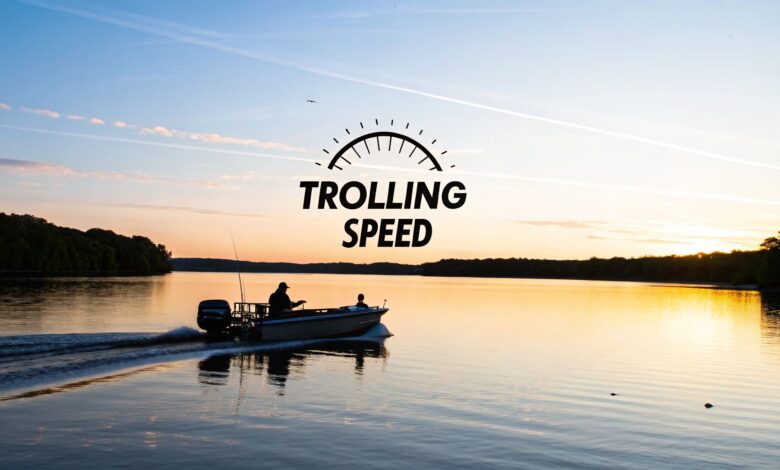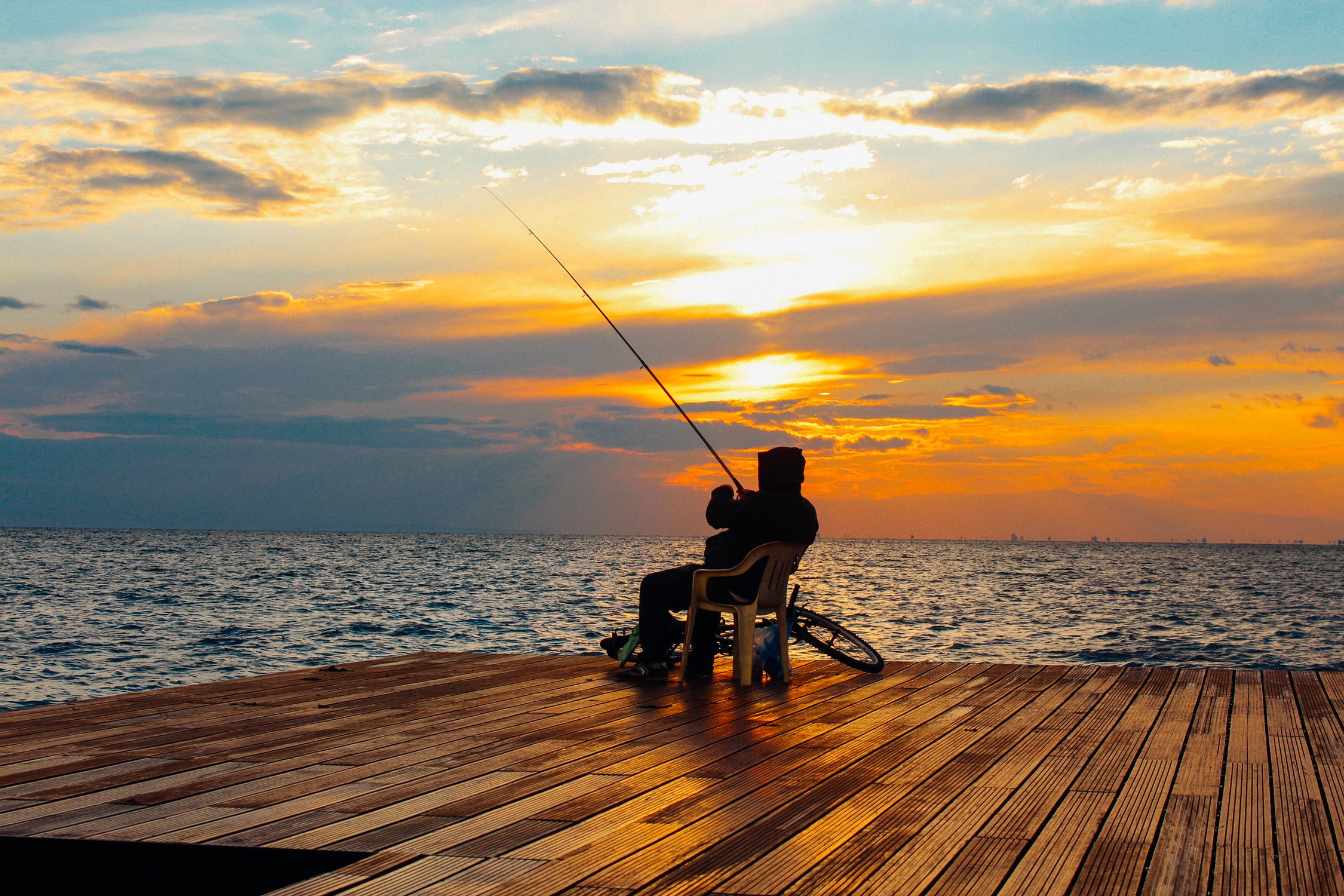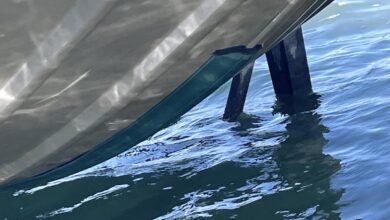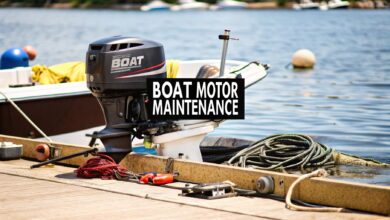
There is no single magic number for the perfect walleye trolling speed. Instead, think of it as a dynamic range, usually between 0.8 and 2.5 MPH. You’ll constantly need to adjust this speed based on the season, your lure, and fish behavior.
This guide will break down how to read those conditions. You can dial in your speed and start putting more fish in the boat.
Finding Your Ideal Trolling Speed
Finding the right trolling speed is about feel and constant adjustment. A walleye's mood and behavior are completely tied to its environment. What worked last week might not work today, especially after a weather change.
Your goal is to present a lure that looks too good to pass up. You want to trigger a strike from an aggressive fish or even a lazy one. More often than not, speed is the most important adjustment you can make.
The Variables That Matter Most
Before launching your boat, you should have a starting game plan. Thinking through these key factors will give you a solid baseline speed.
- Water Temperature: This is the most critical factor. Cold water means a slower fish metabolism, which requires a slower presentation.
- Lure Selection: Every lure has an optimal speed to achieve its designed "action." A crankbait won't wiggle correctly if trolled too fast, and a spinner won't spin if you're too slow.
- Fish Activity Level: If fish are active and chasing, you can speed up. If they are inactive on the bottom, you'll need to slow down and use finesse.
Fisheries data from the Great Lakes region consistently backs this up. Studies show that productive walleye trolling speeds fall between 0.8 and 2.0 MPH. This is especially true when using popular setups like crawler harnesses and crankbaits.
Of course, having the right gear is half the battle. Fine-tuning your equipment is crucial for precise speed control. You can learn more from our guide on how to mount a trolling motor.
Quick Reference Trolling Speeds for Walleye
Here's a cheat sheet to give you a practical starting point. This table breaks down common speed ranges by lure and season.
| Condition / Lure Type | Early Spring (Cold Water) | Summer (Warm Water) | Fall (Cooling Water) |
|---|---|---|---|
| Crankbaits | 1.0 – 1.8 MPH | 1.8 – 2.5 MPH | 1.2 – 2.0 MPH |
| Crawler Harnesses | 0.8 – 1.2 MPH | 1.0 – 1.8 MPH | 0.8 – 1.4 MPH |
| Spoons | 1.5 – 2.2 MPH | 2.0 – 3.0+ MPH | 1.8 – 2.5 MPH |
| Live Bait Rigs | 0.5 – 1.0 MPH | 0.8 – 1.5 MPH | 0.6 – 1.2 MPH |
Remember, these are just starting points. Don't be afraid to experiment and let the walleyes tell you what they want.
Matching Your Speed to Their Mood
To unlock the trolling puzzle, you must understand a walleye's metabolism. They are cold-blooded, so their energy and appetite are dictated by water temperature. This isn't just biology trivia; it's the most critical factor for dialing in your speed.
In cold water, especially below 50°F, a walleye’s metabolism slows dramatically. They become lethargic and won't waste energy chasing fast-moving bait. An easy meal is the only thing on their menu.
This is why your approach in early spring and late fall must be slow. A snail's pace isn't just a good idea; it's essential.
During these cold-water periods, lock in your trolling speed for walleye between 1.0 to 1.4 MPH. This slow presentation gives sluggish fish time to commit and strike. Increasing speed even slightly can be the difference between getting bit and getting ignored.
As water warms into the 60s and 70s, their internal furnace kicks into high gear. Walleyes become aggressive predators looking to feed. This is your green light to increase your speed.
In warm water, speeding up to 1.8 to 2.5 MPH or even faster can be the ticket. A fast-moving crankbait triggers a walleye's predatory instinct. This often provokes reaction strikes from fish that would have ignored a slower bait.
Think of it like this: a cold walleye is a lazy browser needing a delivered meal. A warm-water walleye is an active hunter ready to chase a target. Adjusting your speed to their metabolic state is the most important on-the-water skill.
Matching Your Speed to Your Lure's Action
Every lure in your tackle box has a "sweet spot." This is a specific speed where it achieves its intended action. Trolling a crankbait too slowly results in a weak, uninspired wobble.
On the other hand, pulling a spinner rig too fast causes the blade to "blow out." This means it spins wildly instead of producing its classic, rhythmic thump. The goal is to find the perfect speed where the lure performs as intended.
Fine-Tuning Your Presentation
Before letting out your lines, do a quick test beside the boat. Drop your lure in the water and watch it as you vary your speed. This simple check tells you everything you need to know.
Is that spoon fluttering correctly, or is it just spinning? Is the crankbait digging in with an aggressive wiggle? You have to see the action for yourself to fish with confidence.
A lure that isn't running right is a wasted lure. By taking a moment to visually confirm the action, you eliminate a huge variable in trolling. This will help you fish with much more confidence.
This chart shows how tiny speed adjustments can impact your catch rate.
The data points to a peak catch rate right at 1.1 MPH. It’s a powerful reminder that a minor tweak on your GPS can turn a slow day around.
Lure Type and Optimal Speed Ranges
Different lures have different ideal speed ranges. A stickbait requires a slower presentation than a deep-diving crankbait. Here’s a quick guide to get you started.
| Lure Type | Ideal Speed Range (MPH) | Key Action at This Speed |
|---|---|---|
| Crankbaits | 1.5 – 2.5 | Achieves maximum dive depth and produces a hard, aggressive wobble. |
| Spinner Rigs | 0.8 – 1.5 | Allows the blade to thump rhythmically without "blowing out." |
| Spoons | 2.0 – 3.0 | Creates a distinct fluttering and flashing action that mimics a fleeing baitfish. |
| Stickbaits | 1.2 – 2.0 | Generates a subtle, rolling action perfect for neutral or lethargic fish. |
Remember, this table is a starting point, not a set of hard rules. Always let the fish and conditions be your ultimate guide.
Using Speed to Control Your Lure Depth
Most anglers believe that slowing down makes a lure run deeper. While generally true, the relationship between trolling speed and lure depth is more complex. It's a constant tug-of-war between forces.
When you speed up, water resistance creates an upward "bow" in your fishing line. This drag can actually pull your lure up, fighting against its tendency to dive. The lure's lip digs down while the line drag pulls up.
This means you can often increase your speed without the lure rising to the surface. This allows you to cover more water and trigger reaction bites. You can do this without losing your spot in the strike zone.
The Physics on the Water
Within the typical walleye trolling range, the running depth of many crankbaits barely changes. A faster speed makes the lure's lip dig harder, but increased line drag pulls it up. The net result is often surprisingly small.
The key takeaway is that you have more flexibility than you think. You can adjust your trolling speed for walleye to match the fish's mood. You can do this without completely messing up your lure's depth.
This is a game-changer when dialing in a precise presentation. Of course, consistent power is required for subtle speed adjustments. Our guide on the wiring diagram for a 24-volt trolling motor can help ensure your equipment is ready.
Advanced Tactics for Triggering Strikes
To catch more walleye, stop trolling in a perfectly straight line. The best anglers constantly work the boat, making their lures dance and dart. This is often the secret to turning a follower into a biter.
This is where you shift from just dragging lures to actively hunting fish. It’s an effective way to improve your results.
The Power of the "S" Turn
One of the simplest and most effective tricks is making wide, lazy S-turns. As your boat swings through the outside of a turn, the lures on that side speed up. They also tend to rise slightly in the water column.
At the same time, the lures on the inside of the turn slow down. They almost stall and flutter downward like a wounded minnow.
That sudden change in speed and direction is often the trigger a hesitant walleye needs. It's a simple way to make your presentation more dynamic.
Creating Chaos to Get a Reaction
Besides S-turns, you can add other small, erratic movements to your trolling. These small changes break up the monotony and signal an easy meal.
- The Stall: Pop the motor out of gear for a second or two. This makes your lures pause and drop, a classic strike trigger.
- The Burst: Give the throttle a quick "goose" to make your lures jump forward. This sudden burst can make a following walleye commit.
This stop-and-go cadence is a killer technique. A walleye might follow a lure for a hundred yards, but the second it pauses or darts away, its instinct takes over. That's when you get the strike.
A quality sonar unit is essential for watching how fish react. Checking out the top-rated fish finders under $500 is a great place to start. These advanced tactics are all about giving the fish an offer they can't refuse.
When to Troll Faster for More Walleye
Every walleye angler has heard the "go slow" mantra. While often solid advice, sometimes the best move is to speed up. Trolling faster, often past 2.5 MPH, can be a game-changer.
This tactic works well for scattered fish in big, open water. It’s a numbers game; you show your lure to as many active fish as possible.
There's another huge benefit to picking up the pace: the reaction strike. A fast-moving crankbait can trigger a predatory instinct in a walleye that isn't hungry. If you’re marking fish but not getting bites, speeding up is a key adjustment.
On massive bodies like the Great Lakes, some captains take this to the extreme. Captain Mike Schoonveld, for example, often trolls around 4.0 MPH. He covers twice the water as someone at 2.0 MPH, doubling his chances of finding fish. You can read more about his approach at Great Lakes Angler.
The takeaway is simple: don't be afraid to experiment with speed. Trolling faster is an effective method for locating active walleye. It transforms a slow search into a high-powered hunt.
This aggressive tactic shines during stable summer weather. A walleye's metabolism is high, and they are willing to chase a meal. Speeding up ensures your lures are always in front of fresh, unpressured fish.
For more expert guides and tips on everything from fishing electronics to boat maintenance, trust the resources at Boating Articles. Explore our in-depth content today at https://boating-articles.com.



